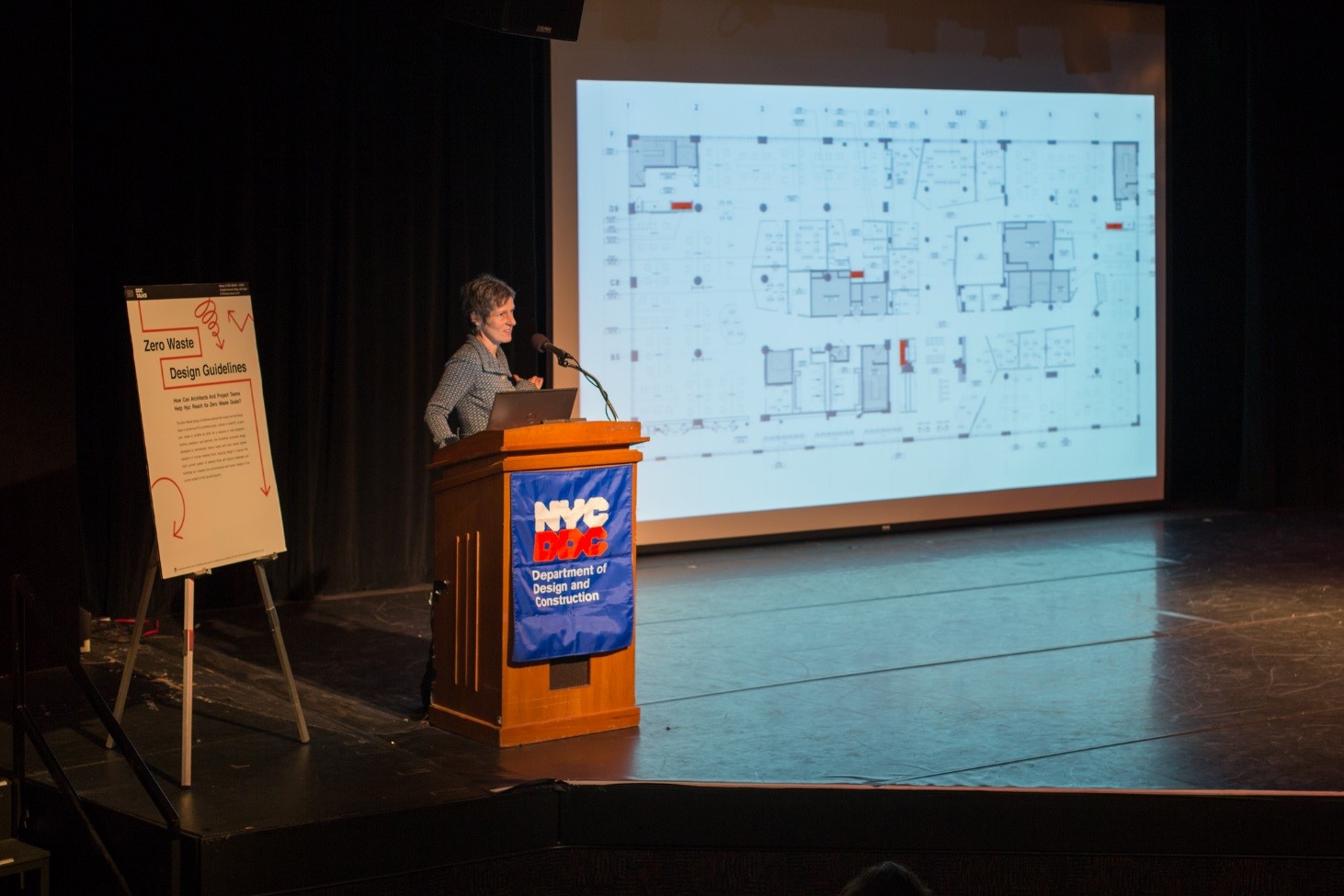
 Department of Design and Construction311
Department of Design and Construction311 Search all NYC.gov websites
Search all NYC.gov websites
February 14, 2018
DDC Talks Lecture Series Highlights Sustainable Waste Management Practices
Contact:
Dan Leibel
718-391-1251
Long Island City, NY – Today’s latest installment of the DDC Talks lecture series featured Clare Miflin and Juliette Spertus, authors of the Zero Waste Design Guidelines, leading a discussion on how New York City can design its buildings, streets and sidewalks to more efficiently reduce waste and increase recycling. The presentation addressed the crucial role that design plays in achieving the Mayor’s 0X30 initiative, which aims to manage the City’s waste stream in a way so that zero municipal waste will be sent to landfills by the year 2030.
“DDC Talks continues to be one of the most valuable resources offered by our agency, and I thank Ms. Miflin and Ms. Spertus for bringing innovative ideas about responsible waste design to our attention through this forum,” said DDC Acting Commissioner Ana Barrio. “DDC Talks remains an important source of information for our design professionals.”

An estimated 25,000 tons of waste is generated per day in New York City. According to the Miflin and Spertus, the best way to manage collect and disposal of this waste stream is through a combined approach in which organics, paper recyclables and other trash are sorted prior to collection.
Ways to make sorting easier can be implemented in the design of a building, office or home. By planning for and installing separate chutes for recycles, trash and organic waste, the City can increase the amount of resources that can be recycled and decrease the amount of materials that go to landfills.
“Designing for material flows in our buildings is not the same as designing for energy and water flows,” said Miflin. “Materials are mainly moved by human labor, and they are not uniform – they can be useful, hazardous, recyclable or food for worms – so they need to be sorted to be resources rather than trash. ‘Zero waste’ requires an integrated approach with architects, planners and building operators working in tandem to design a coherent system in which materials are easily separated, handled, stored and collected in their own streams.”
The presenters claim another potential benefit of separating waste streams: the reclaiming of valuable public space. Instead of leaving trash in bags on the sidewalk, the use of large compacting containers would allow for a centralized pickup location and easier transport. By clearing up the sidewalks, City residents would have more space for physical activity.
As less land is needed for waste, land could be reclaimed as public parks or for necessary municipal activities. The 0X30 initiative, along with the Zero Waste Design Guidelines, also decreases the City’s costs for the Department of Sanitation’s regularly scheduled waste pickup.
The Zero Waste Design Guidelines are made possible with support from The Rockefeller Foundation and were developed in collaboration with the AIA New York Committee on the Environment; Kiss + Cathcart, Architects; ClosedLoops; and the Foodprint Group.
About the NYC Department of Design and Construction
The Department of Design and Construction is the City’s primary capital construction project manager. In supporting Mayor de Blasio’s long-term vision of growth, sustainability, resiliency, equity and healthy living, DDC provides communities with new or renovated public buildings such as firehouses, libraries, police precincts, and new or upgraded roads, sewers and water mains in all five boroughs. To manage this $13 billion portfolio, DDC partners with other City agencies, architects and consultants, whose experience bring efficient, innovative and environmentally-conscious design and construction strategies to City projects. For more information, please visit nyc.gov/ddc.


